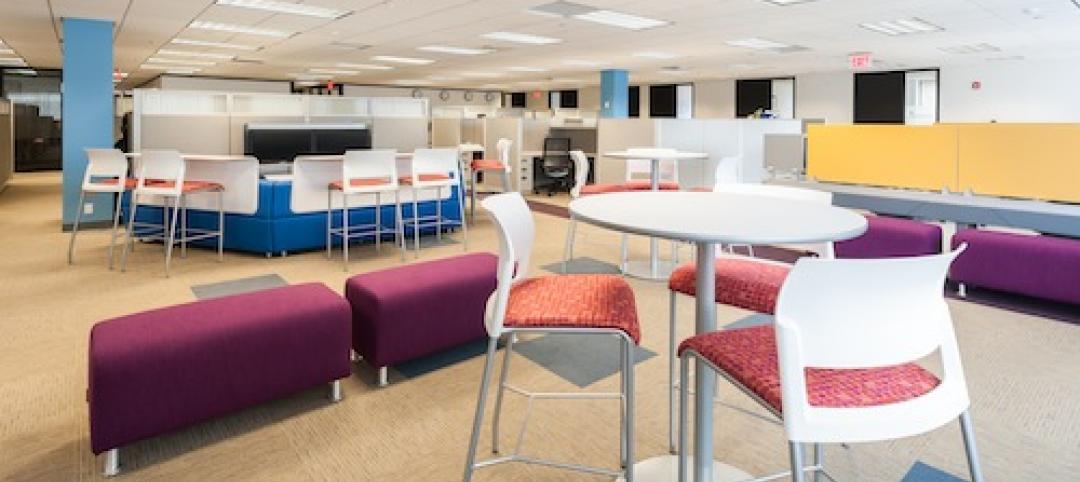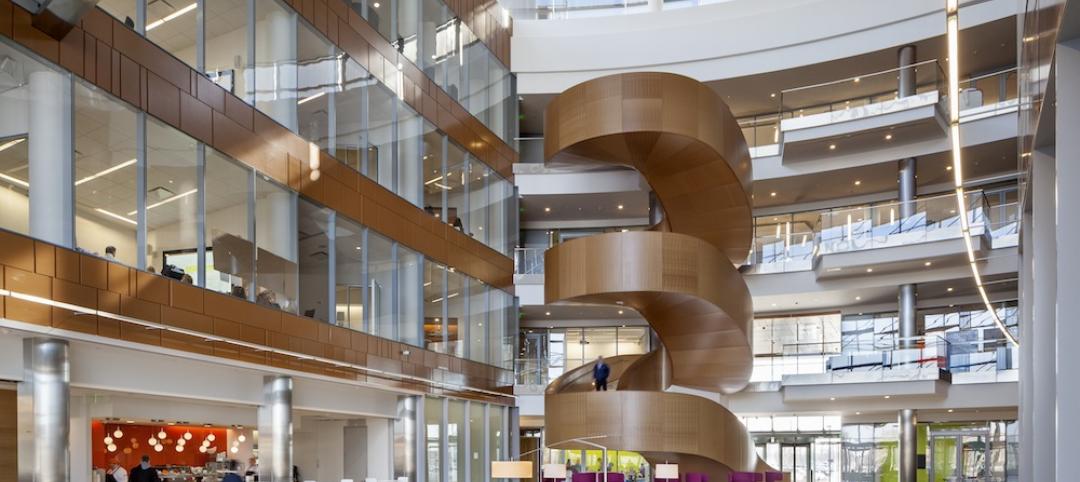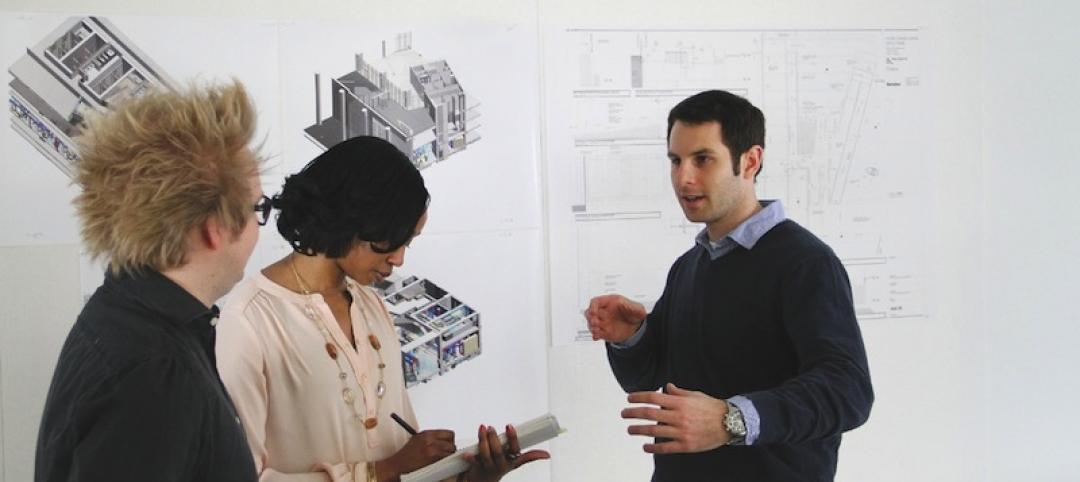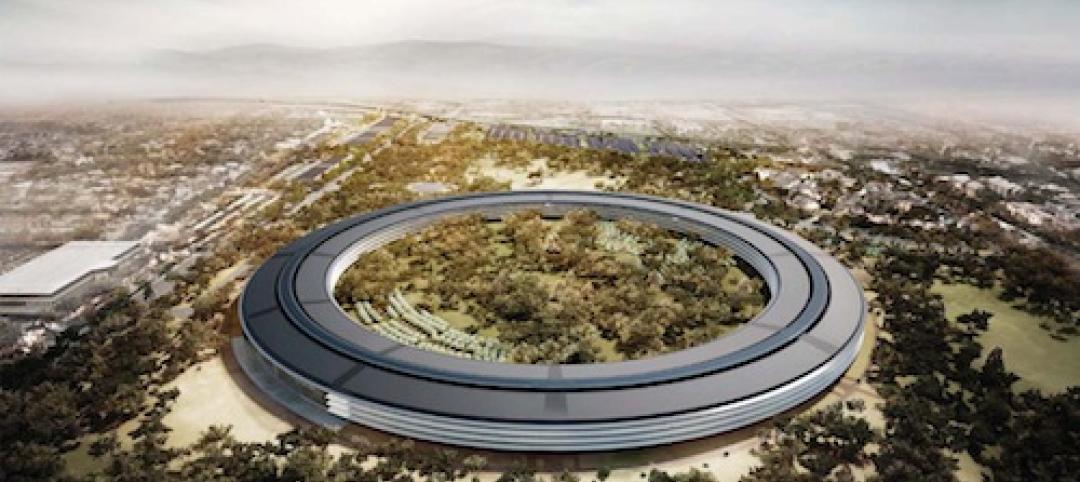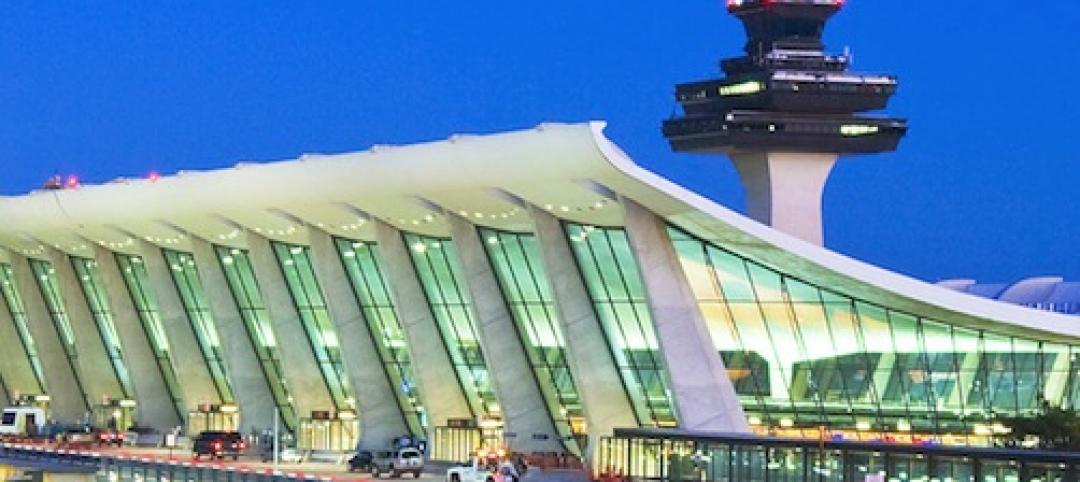On the 37th floor of the 51-story 1600 Smith building in Houston, four design firms have each developed spec office suites that are being positioned as showcases for next-generation work environments.
Brookfield Property Partners, the real estate developer, gave these firms—Gensler, Rottet Studio, Ziegler Cooper Architects, and Inventure Design—pretty much carte blanche to come up with their vision for the office of the future. When construction is completed next month, Brookfield intends to market these suites under the brand DesignHive by Brookfield Houston.
O’Donnell/Snider Construction is doing the renovation work on all four suites.
The design firms have enjoyed unusual freedom on this project, within a building that hadn’t been renovated since it opened in 1984. Other than a budget, “there were no real set parameters, and no client,” said Laura Nagala, Ziegler Cooper’s project designer for DesignHive Houston. Dean Strombom, AIA, LEED BD+C, a principal at Gensler, noted that DesignHive gives his firm “the opportunity to take a look at how are people going to work in the future, [and] what are the things that are important.”
Yishio Kuo, NCIDQ, LEED AP ID+C, Gensler’s design director on this project, said that the suite design acknowledges that “people work anywhere, anyplace, any time.”
In a written response to questions from BD+C, Brookfield stated that the overall goal of DesignHive is “innovation.” And in videotaped interviews, its design partners talked about “collaboration” and “creating exciting spaces” as abiding guidelines for their suites.
“We saw this as a great opportunity for the firms to bring a completely fresh vision to 1600 Smith,” says Paul Frazier, EVP and Head of Brookfield’s Houston Region. “The tower’s rich history will remain ever-present, but through new eyes, DesignHive will reimagine each space’s design potential, and attract tenants who may not have considered the iconic tower previously.”
Brookfield and its design partners in Houston are keeping the specifics about the design of each suite—whose sizes range from 2,815 sf to 4,193 sf —close to the vest until next month’s opening. Brookfield also hasn’t said yet whether it intends to expand the DesignHive brand into other markets, except to note that it hopes the brand “resonate[s] across all tenant categories, broadening the spectrum of potential tenants and accelerating leasing velocity.”

DesignHive is the brand under which Brookfield is promoting new office designs in Houston and Los Angeles. The developer hasn't said yet whether it will bring that brand to other metros. Image: Brookfield Property Partners.
Two years ago, Brookfield launched DesignHive when it conducted a competition involving six architecture firms—Wolcott, Unispace, Rottet Studio, Schlemmer Algaze Associates, Interior Architects, and Gensler—for which each designed a spec suite in one of two buildings in Los Angeles: the 52-story Gas Company Tower, and the Wells Fargo Center.
“What we are doing with DesignHive in downtown Los Angeles is demonstrating that high-rise buildings—with great architecture and design, amenities, common areas, infrastructure, connectivity, parking and access to public transit—can be the preferred option for many creative uses as well as for traditional service firms,” Bert Dezzutti, EVP of Brookfield’s western region, told Interior Design magazine at the time.
When the L.A. DesignHive opened in May 2015, the website L.A. Downtown reported the only parameters that Brookfield imposed on its six designers was a budget and the type of tenant. The six L.A. suites ranged from 3,792 sf to 4,535 sf.
•Gensler’s “law firm of the future” in the Wells Fargo Center has a concierge-style reception desk, and open and private workstations to spark collaboration.
•SAA’s 4,320-sf suite for a boutique trading and investment firm has a purple-and-gold color scheme that’s supposed to signify wealth and power, Italianate wall coverings, and a chandelier over a bar.
•Interior Architects’ suite, for the technology consulting sector, features lightweight furniture that can be moved around easily. There are practically no walls in this suite.
•Rottet’s design, for a fashion media tenant, includes custom wall art and Ikea furniture.
•Unispace’s 4,378-sf suite, for a cloud-based computing company, includes hanging ceiling raindrop sculptures and a mural of the earth’s atmosphere and clouds. The space opened with a break area with Nintendo Wii and a glass booth to make private phone calls.
•Wolcott designed its suite for a law firm, too, albeit one targeting younger clients. The space includes hangout areas with oversized pillows and two pod structures that look like teepees.
Related Stories
| Apr 6, 2013
First look: GlaxoSmithKline's double LEED Platinum office
GlaxoSmithKline and Liberty Property Trust/Synterra Partners transform the work environment with the opening of Five Crescent Drive
| Apr 5, 2013
No evidence that mandatory building energy labeling improves efficiency, study says
The Building Owners and Managers Association (BOMA) International and the Greater Boston Real Estate Board (GBREB) released a report, “An Economic Perspective on Building Labeling Policies,” that questions the efficacy of mandatory building energy labeling.
| Apr 5, 2013
'My BIM journey' – 6 lessons from a BIM/VDC expert
Gensler's Jared Krieger offers important tips and advice for managing complex BIM/VDC-driven projects.
| Apr 5, 2013
Projected cost for Apple's Campus 2 balloons to $5 billion
Campus 2, Apple Inc.'s proposed ring-shaped office facility in Cupertino, Calif., could cost $5 billion to build, according to a report by Bloomberg.
| Apr 3, 2013
5 award-winning modular buildings
The Modular Building Institute recently revealed the winners of its annual Awards of Distinction contest. There were 42 winners in all across six categories. Here are five projects that caught our eye.
| Apr 2, 2013
6 lobby design tips
If you do hotels, schools, student unions, office buildings, performing arts centers, transportation facilities, or any structure with a lobby, here are six principles from healthcare lobby design that make for happier users—and more satisfied owners.
| Mar 29, 2013
PBS broadcast to highlight '10 Buildings That Changed America'
WTTW Chicago, in partnership with the Society of Architectural Historians, has produced "10 Builidngs That Changed America," a TV show set to air May 12 on PBS.
| Mar 29, 2013
Shenzhen projects halted as Chinese officials find substandard concrete
Construction on multiple projects in Guangdong Province—including the 660-m Ping'an Finance Center—has been halted after inspectors in Shenzhen, China, have found at least 15 local plants producing concrete with unprocessed sea sand, which undermines building stabity.



